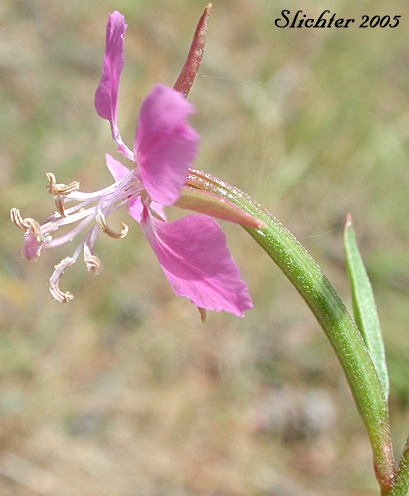 Characteristics:
Characteristics:
Common Clarkia is a sometimes weedy annual t0 70 cm tall. This wildflower has a sparse number of leaves. The leaves are largely subopposite with a lanceolate to elliptic shape. The leaf blades are 2 to 7 cm long and 5 to 20 mm wide, with a long (1 to 3 cm) slender petiole.
The inflorescence is a few-flowered raceme. The four petals of the corolla are slightly irregular in size and shape. The petals are rose-purple with purple spots. The petals measure 5 to 10 mm long and 3 to 6 mm wide. The individual petal shape is spatulate. The buds also nod downward. The stamens are slightly shorter than the stigma, which is shortly cleft.
Common Clarkia is found in dry forest openings.
Common Clarkia is found from southern British Columbia south along the east slope of the Cascades in Washington, but on both sides of the Cascades through Oregon to California. It is found eastward to eastern Idaho, Utah and Arizona.
In the Columbia River Gorge, it is found between 200'-2200' from about Bonneville Dam and eastward to Lyle, WA.